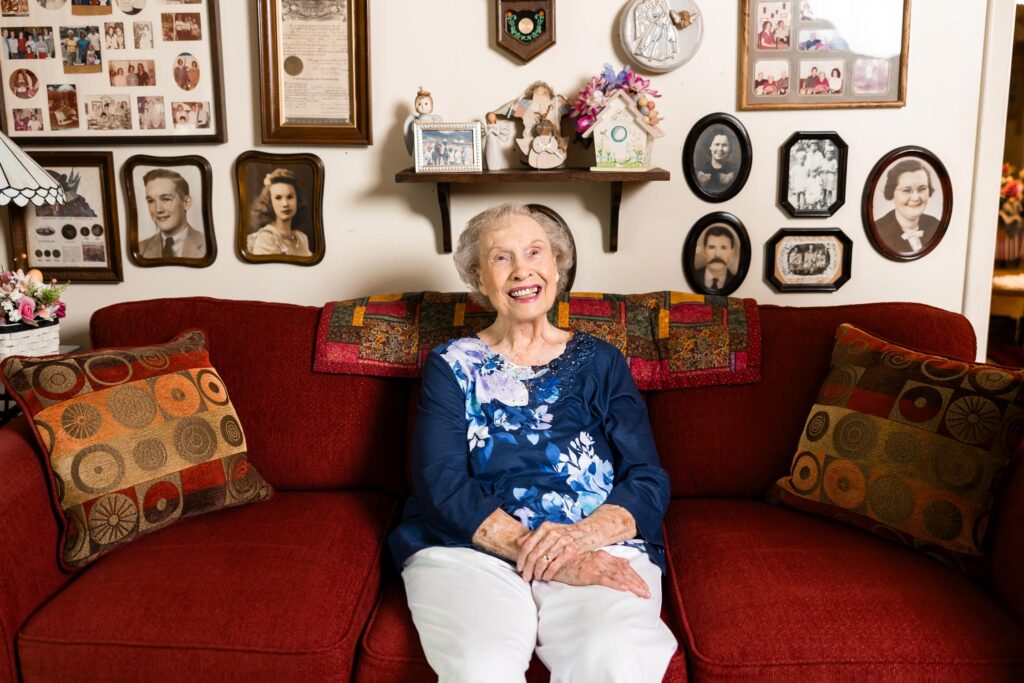Caring for an aging loved one involves making significant decisions, and among the most crucial is ensuring they can age in place comfortably and safely. Aging in place means enabling seniors to remain in their homes as they grow older, surrounded by familiarity and comfort. Enhancing safety and comfort at home is a multifaceted approach that requires thoughtful exploration of available resources and a clear understanding of how to utilize them effectively. By focusing on home modifications, financial assistance, community support, and technology, you can create an environment where your loved ones can thrive independently while maintaining their dignity and quality of life.
Key Takeaways:
- Aging in Place: Aging in place means seniors stay at home with safety modifications like grab bars, improved lighting, and accessible layouts.
- Free and Affordable Resources: Non-profits, community groups, and programs such as HUD or USDA provide low-cost home updates (e.g., ramps, stairlifts). AARP offers guides and contractor connections.
- Home Modification Ideas: Useful updates include grab bars, non-slip flooring, smart lighting, and walk-in showers to improve safety and mobility.
- Financial Assistance: Grants, VA housing aid, tax deductions, and charity-funded programs offer financial relief for home adaptations.
- Technology for Independence: Tools like voice-activated devices, health monitors, video doorbells, and medication dispensers also enhance safety and autonomy.
- Costs: Basic updates often cost under $200; larger projects (e.g., ramps or stairlifts) range from $1,000 to $15,000. Financial aid programs can help.
- Challenges & Solutions: Common issues such as isolation, health risks, and maintenance needs are addressed through community support, proactive planning, and health monitoring technology.
- Design Best Practices: Features like wide doorways, curbless showers, touch faucets, sturdy furniture, and single-level layouts support safe aging.

Aging in Place
Aging in place refers to staying in your home as you grow older and ensuring that it remains a safe, functional, and comfortable space. In many cases, seniors prefer the familiarity and comfort of their own homes over relocating to a care facility.
The National Institute on Aging highlights the importance of adapting homes to meet these evolving needs. This might include installing grab bars in bathrooms, rearranging furniture for better accessibility, or upgrading lighting to prevent accidents. A strong support system also helps reduce the risk of isolation, a common concern for aging individuals.
Affordable and Free Resources for Senior Home Modifications
Firstly, home modifications don’t have to break the bank. Many programs offer free or low-cost resources for senior-friendly updates. Local non-profits help with projects like installing ramps, widening doorways, or handling smaller repairs. Community groups and skilled volunteers often assist with these changes.
Government support also exists. The HUD (Housing and Urban Development) program, for example, helps qualified seniors make essential home modifications. Resources may include adding stairlifts or improving wheelchair access. Some state and local organizations also provide funding, so it’s worth contacting your local government office for information.
AARP’s Role in Aging in Place Initiatives
AARP is a leader in creating resources for aging in place. They provide families with checklists, guides, and tools to adapt homes for safe living. Their resources emphasize practical updates such as no-step entrances, walk-in showers, and improved home lighting.
AARP also connects caregivers and seniors with trained contractors who specialize in home modifications. Through workshops and online tools, they empower those helping loved ones age in place by simplifying the process of creating adaptable living spaces.
Home Modifications to Make Aging in Place Safer
Small changes can significantly improve safety and ease of movement within the home. Making adjustments is less intimidating when you know there are practical options and supportive programs available. Let’s explore how these can transform a living space.
Home Repair Assistance Programs
Various home repair programs provide seniors with affordable solutions for modifications. These initiatives focus on structural safety, like fixing stairs, repairing roofs, or adding grab bars. USDA grants, for example, help low-income seniors resolve health hazards in their homes. Local government-funded programs may also provide resources for accessibility updates.
Ideas for Home Renovations and Modifications
Simple modifications can go a long way in creating a safer home. Adding grab bars in bathrooms helps prevent slips. Wider doorways also allow easier access for wheelchairs. Upgrading kitchens with lever-style faucet handles or raising electrical outlets can additionally benefit seniors with decreasing mobility. Smart lighting options make homes safer and easier to navigate.
Comprehensive Benefits of Renovations
Moreover, home upgrades often decrease the need for future care interventions. Jumping into projects like installing ramps or walk-in showers makes everyday activities less risky and more manageable. Non-slip flooring or stairlifts improve safety and mobility. In the long term, these updates are more cost-effective than assisted living. Learn more at the National Council on Aging.
Financial Assistance for Aging in Place
Home Accessibility Grants
Firstly, some accessibility grants reduce costs for modifications essential for safe aging. Grants may fund items like bathroom grab bars or wheelchair ramps. Federal programs, such as the USDA’s housing repair grants, and state-level initiatives serve low-income households.
Financial Help for Senior Housing Adaptation
Loans, subsidies, and nonprofit-backed programs also lighten the financial load of renovating homes. Charities sometimes cover labor costs, requiring seniors to fund only materials. Veterans can benefit from VA housing grants tailored to their specific adaptation needs.
Tax Deductions for Aging-Related Upgrades
Seniors may also qualify for tax deductions on home modifications linked to medical conditions. Changes could include bathroom updates or stairlift installations. Proper documentation and adherence to IRS guidelines make this a valuable option to offset expenses.
Technology for Safe and Independent Living
Among the many “aging in place” resources, modern technology offers numerous solutions to help seniors maintain independence. Voice-activated systems can assist with tasks like turning on lights or locking doors. Wearable devices track health and alert caregivers in emergencies, while automated dispensers reinforce proper medication management.
Additionally, video doorbells increase home security by enabling remote monitoring of visitors. GPS trackers assist families in locating loved ones experiencing memory issues. These tools provide valuable safety and peace of mind for seniors and caregivers alike.
The Costs and Challenges of Aging in Place
The Costs of Home Modifications
Creating a safe home environment comes with varying costs. Minor changes, like grab bars and non-slip mats, often cost under $200. Larger projects, such as installing ramps or stairlifts, can range from $1,000 to $15,000. Financial assistance programs are available to help cover these expenses. The National Council on Aging is a helpful resource for finding funding options and planning expenses early.
Challenges Seniors Face When Aging at Home
Aging at home presents obstacles ranging from isolation to physical hazards. Loneliness affects both mental and physical health. Homes not designed for reduced mobility increase risks, like slips or falls. Routine maintenance tasks, such as snow shoveling or repairs, can also become difficult to manage.
Strategies to Overcome Aging Challenges
Planning ahead reduces stress and helps families handle challenges as they arise. Begin with smaller updates, such as improving lighting or fixing stairs. Build a support system of neighbors, friends, and local services. Regular communication between family members ensures seniors remain connected and secure.
Communities and Support Networks
Community involvement is critical for seniors aging at home. Moreover, reliable connections with neighbors, family members, or local organizations help reduce loneliness and improve quality of life.
Building Supportive Networks
Strong support networks often come from churches, neighborhoods, or other local groups. Sharing responsibilities, like running errands or organizing transportation, makes a big difference. Additionally, programs like Habitat for Humanity's Aging in Place Resources empower neighborhoods to work together and support seniors.
Advocacy for Aging in Place
Advocacy groups address challenges by recommending policies that improve housing, healthcare, and public spaces for older adults. Their efforts ensure that seniors receive equitable resources, fostering safe and accessible environments.
Best Practices for Senior-Friendly Home Design
Effective Home Layout Strategies
Creating a senior-friendly home starts with simple changes: wider doorways, accessible bathroom layouts, and single-story living spaces. Ensuring seamless, step-free transitions between rooms reduces trip hazards.
Practical Home Adjustments
Small changes add significant value. Lever-style handles replace knobs, while curbless showers with handheld heads ensure safe, accessible bathing. Secure railings along steps and gradual-sloping ramps make homes easier to navigate.
Lighting and Furniture Tips
Bright, unobtrusive lighting is vital, particularly in high-risk areas like hallways and staircases. Motion-sensor lights are especially helpful. Sturdy, appropriately sized furniture supports safe movement, while adjustable beds and rounded furniture minimize risks.
With planning, resources, and community support, aging in place is achievable. By focusing on safety, connectivity, and well-considered modifications, seniors can remain independent and enjoy a higher quality of life. Start small, explore available financial options, and use these strategies to create an environment where loved ones can thrive.
Discover Aging in Place Resources Today
As you or your loved ones plan for the future, finding the right resources to age in place can make all the difference. With expert guidance, tailored solutions, and a supportive community, navigating this journey becomes easier and more rewarding. Additionally, you can access personalized assistance in central Arkansas by reaching out to CareLink's team today. Don’t wait—take the first step toward independence and comfort!





